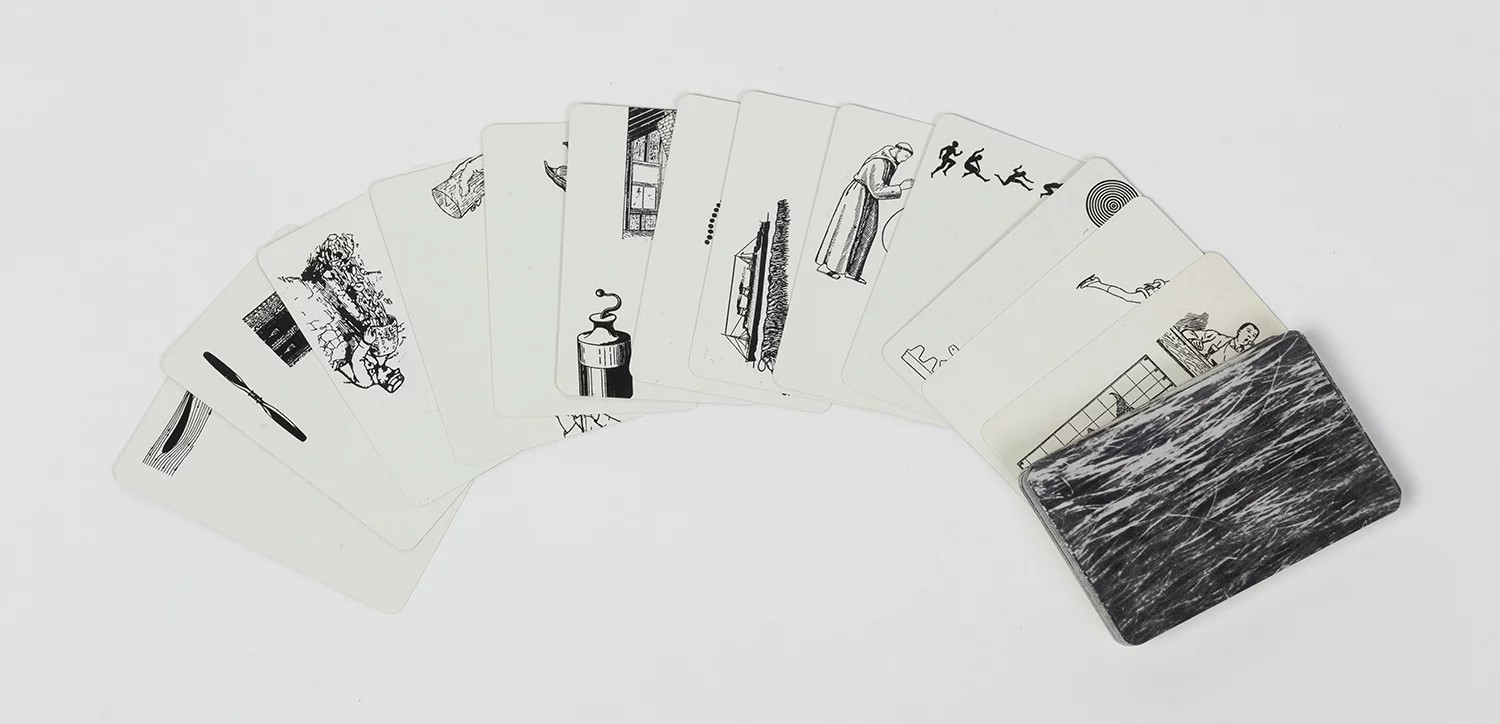Following the idea of the ‘Fluxkit’ that George Maciunas conceived in 1964, Fluxus artists produced multiple editions of kits encompassing a selection of miscellaneous objects and paper as graphic scores for the user to read or manipulate, as with interactive games. The kits were packed together in a small attaché case for sale, which was first advertised in the fourth Fluxus newspaper, FLuxus cc fiVe ThReE that also contained Nam June Paik’s essay, Afterlude to the Exposition of Experimental Television (1964).
Deck, A Fluxgame is by George Brecht. Consisting of 64 playing cards, various pictures in black and white cover the card’s face, and an image that looks like hair fills the backside. Deprived of numbers or letters on the cards, not to mention instructions, participants—alone or together—can create rules while playing the game.





